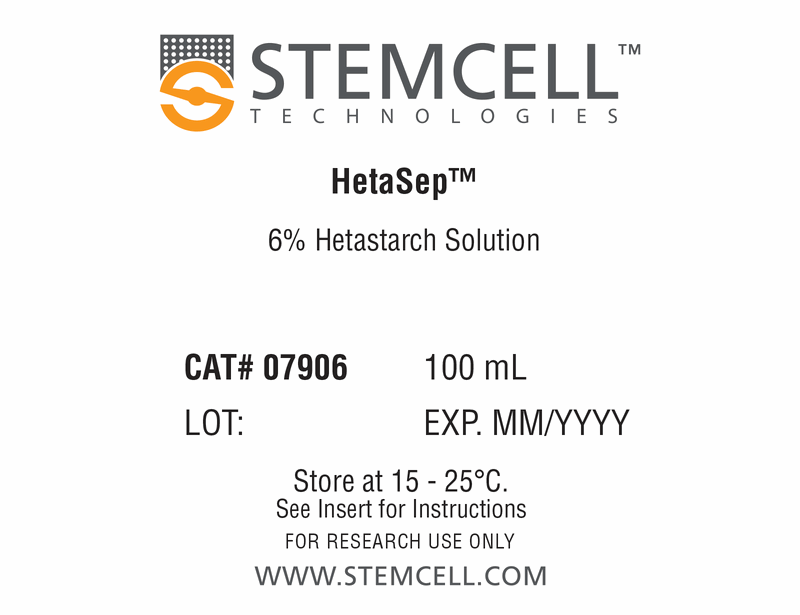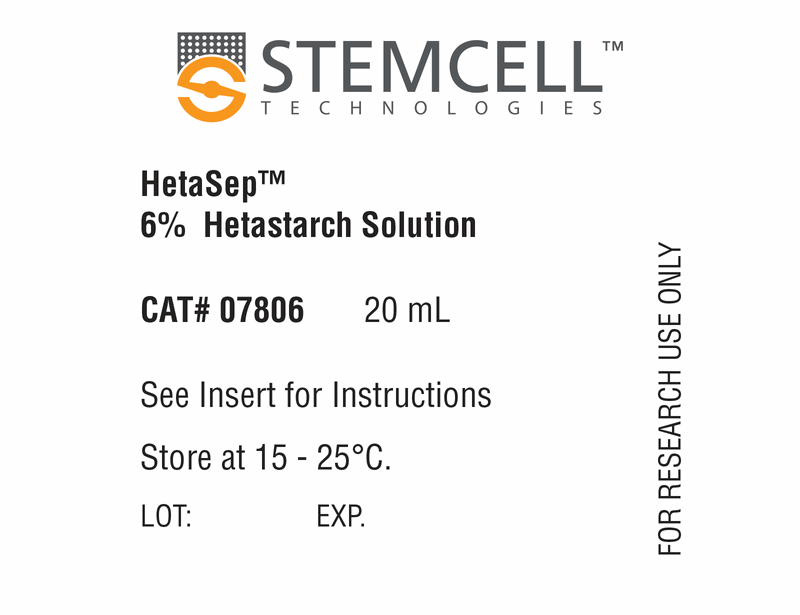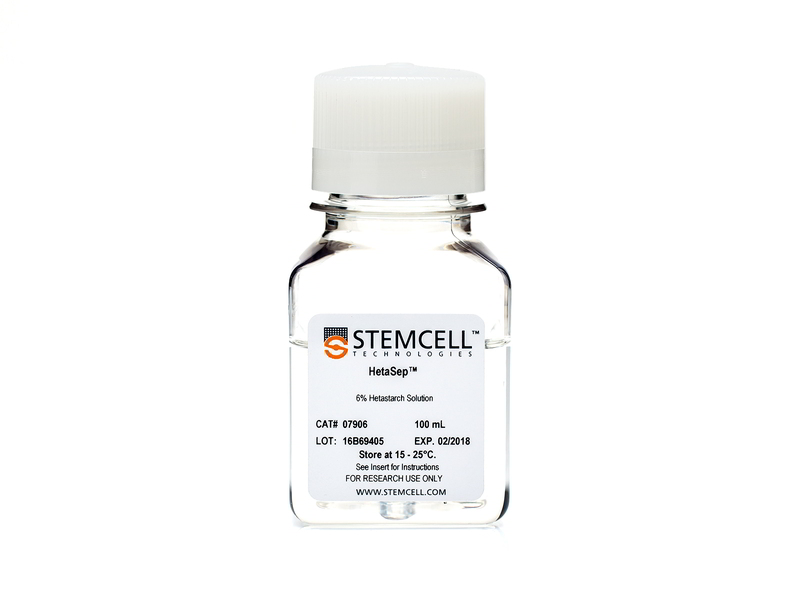概要
HetaSep™ is an erythrocyte aggregation agent used to quickly separate nucleated cells from red blood cells (RBCs) in whole blood. Aggregated erythrocytes settle much faster than dispersed cells. By controlling the settling time and/or centrifugation speed, the majority of nucleated cells are recovered in the supernatant. Approximately 95 - 99% RBC depletion is attained if the nucleated cell-rich fraction is removed carefully. HetaSep™ contains 6% w/v hetastarch.
技术资料
| Document Type | 产品名称 | Catalog # | Lot # | 语言 |
|---|---|---|---|---|
| Product Information Sheet | HetaSep™ | 07806, 07906 | All | English |
| Safety Data Sheet | HetaSep™ | 07806, 07906 | All | English |
数据及文献
Publications (2)
EBioMedicine 2015 MAR
Response of Neutrophils to Extracellular Haemoglobin and LTA in Human Blood System.
Abstract
Abstract
BACKGROUND Haemolytic infection lyses red blood cells, releasing haemoglobin (Hb) into the plasma. Although recent studies showed that immune cells recognize redox-active cytotoxic extracellular Hb (metHb) bound to pathogen-associated molecular patterns (PAMPs), currently available information is limited to experiments performed in defined conditions using single cell lines. Therefore, a systemic approach targeting primary whole blood cells is required to better understand the cellular immune defence against metHb and PAMPs, when under a haemolytic infection. METHODS We investigated how human white blood cells, including neutrophils, respond to metHb and lipoteichoic acid (LTA) by measuring reactive oxygen species (ROS), signalling mediators (ERK and p38), NF-κB, cytokines, elastase secretion and cell activation markers. FINDINGS metHb activates NF-κB in TLR2-expressing HEK293 cells but not in normal or TLR9-expressing HEK293 cells. Treatment of isolated neutrophils with metHb increased production of ROS and expressions of IL-8, TNFα, and CD11b, which were further enhanced by metHb + LTA complex. While LTA stimulated the survival of neutrophils, it caused apoptotic cell death when complexed with metHb. The activation of neutrophils by metHb + LTA was subdued by the presence of other types of white blood cells. INTERPRETATION metHb and metHb + LTA complex are ligands of TLR2, inducing an unconventional TLR signalling pathway. Neutrophils are a highly sensitive cell type to metHb + LTA complex. During a haemolytic infection, white blood cells in the vicinity crosstalk to modulate neutrophil TLR-signalling induced by metHb and LTA.
Journal of virology 2009 OCT
Mucosal innate and adaptive immune responses against herpes simplex virus type 2 in a humanized mouse model.
Abstract
Abstract
Genital herpes, caused by herpes simplex virus type 2 (HSV-2), is one of the most prevalent sexually transmitted diseases worldwide and a risk factor for acquiring human immunodeficiency virus. Although many vaccine candidates have shown promising results in animal models, they have failed to be effective in human trials. In this study, a humanized mouse strain was evaluated as a potential preclinical model for studying human immune responses to HSV-2 infection and vaccination. Immunodeficient mouse strains were examined for their abilities to develop human innate and adaptive immune cells after transplantation of human umbilical cord stem cells. A RAG2(-/-) gammac(-/-) mouse strain with a BALB/c background was chosen as the most appropriate model and was then examined for its ability to mount innate and adaptive immune responses to intravaginal HSV-2 infection and immunization. After primary infection, human cells in the lymph nodes were able to generate a protective innate immune response and produce gamma interferon (IFN-gamma). After intravaginal immunization and infection, human T cells and NK cells were found in the genital tract and iliac lymph nodes. In addition, human T cells in the spleen, lymph nodes, and vaginal tract were able to respond to stimulation with HSV-2 antigens by replicating and producing IFN-gamma. Human B cells were also able to produce HSV-2-specific immunoglobulin G. These adaptive responses were also shown to be protective and reduce local viral replication in the genital tract. This approach provides a means for studying human immune responses in vivo using a small-animal model and may become an important preclinical tool.

 网站首页
网站首页





